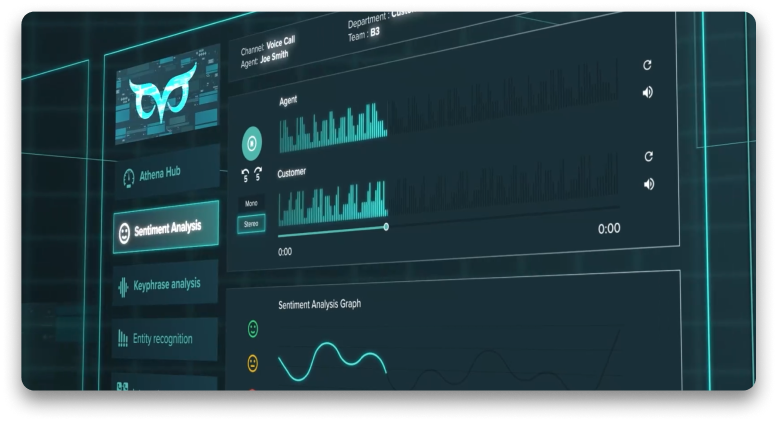Predictive Dialler
If you’re in the sales or outbound marketing space, you have probably heard about predictive diallers before. In other articles, we have briefly covered the multiple types of diallers available for call centre agents and sales representatives and how each of them can suit different businesses’ needs.
In this article, we’ll focus on Predictive Dialler: what it is, what sets it apart from other types of Diallers, how it works, why it is such a valuable tool within an outbound call centre phone system, and how and what businesses can benefit from it.
What is a Predictive Dialler?
As we have seen in a previous article, a Dialler is a device or software application designed to help sales or contact centre agents start outbound calls. It does so by automating the process of dialling numbers from a contact list, seamlessly connecting the established calls to available agents. In that article, we also offered a brief overview of what is a Predictive Dialler: however, we’ll go into a bit more depth about it here.
A Predictive Dialler is a particular type of Dialler that differs from other types in a key aspect: in a nutshell, what sets Predictive Diallers apart is their use of complex statistical algorithms and Artificial Intelligence to predict when an agent is likely to be available, and then initiate multiple calls simultaneously to match the anticipated agent availability.
To see things more clearly: other types of diallers will just dial numbers following a pre-fixed strategy or pacing, which must be set beforehand by a human agent; conversely, a Predictive Dialler will work out this pace and strategy on its own, analysing data about call duration, agent availability, or customer priority, and automatically dialling a new number just seconds before an agent finishes their current call.
The software avoids directing outbound calls to occupied agents and can effectively filter out busy signals, unanswered calls (no-answers), and disconnected numbers. Agents are exclusively connected to answered calls, resulting in reduced wasted time and increased conversation time with responsive customers.
This all results in maximised agent efficiency, time savings, an increase in the number of successful connections per agent and day, and, ultimately, more conversations and conversions.
Over the last 20 years, predictive dialling has witnessed significant transformations in its landscape. What was once characterized by large-scale outreach opportunities and relatively responsive customers has evolved into an era marked by dwindling response rates across all sectors. Nowadays, the outbound calling environment features small, targeted contact lists and stringent regulatory frameworks. This shift highlights a move towards more personalized and strictly regulated communication strategies, with an emphasis on quality over quantity.
In case you would like to know a bit more about how the inner workings of a Predictive Dialler look like, we’re sketching it out for you in the next section.
How does a Predictive Dialler work?
The operation of a predictive dialler involves several steps. In a nutshell: First, it uses predictive algorithms to estimate when agents will become available. It then proceeds to dial multiple numbers concurrently, exceeding the number of available agents, as some calls are expected to be unanswered, busy signals, or voicemails. The dialler screens out unanswered calls and connects live calls to available agents in order to minimise idle time.
Let’s get into a bit more detail.
Predictive dialler software relies on mathematical algorithms to facilitate dialling decisions aligned with business objectives. Some of the variables considered by these algorithms are:
- What is the typical duration of a conversation, or what are the call handling times for each team, indicating the usual duration of successful phone calls?
- How many attempts does the system make to reach a human recipient when making outbound calls to a particular number?
- What is the customer abandonment rate for outbound calls that are not promptly attended to by agents?
- What is the current availability of outbound agents within the organisation? How many are prepared for the next call, and how many are unavailable?
- Is it necessary for the agent to initiate a callback as part of the interaction?
The Predictive Dialler computes all this information to anticipate when an agent will become available and initiates calls on their behalf.
By simultaneously dialling multiple numbers, the system provides agents with a continuous stream of calls, minimising downtime. This ensures that agents do not need to manually search through contact lists or wait for the next call.
In the event of an unanswered call, the predictive dialler promptly proceeds to the next number in the contact list. During peak call centre activity, it can adjust its pace or temporarily pause operations until agents are approaching the end of their ongoing calls.
Predictive diallers are also capable of gathering and monitoring campaign-related data, leveraging call metrics. This high level of efficiency enables businesses to run multiple campaigns simultaneously, among many other benefits. Let’s go through some of them.
Benefits of Predictive Dialler
Enhanced Productivity
One of the primary advantages of predictive diallers is their ability to enhance efficiency and productivity among agents. The system operates significantly faster than manual dialling, allowing agents to handle a significantly larger volume of calls.
Minimised Human Error
Even the most skilled agents are prone to human errors, but a predictive dialler is a precision machine that consistently dials numbers accurately. This eliminates the potential for errors and saves time.
Boost Conversion Rates
Predictive dialler software reduces the time wasted on unanswered calls, enabling agents to spend more time conversing with responsive customers. It also identifies optimal calling times and can broadcast automated messages for targeted campaigns.
Reduces Operational Costs
The software’s time-saving and productivity-enhancing features lead to cost savings for the company. Additionally, automated systems can operate around the clock, and cloud-hosted software further reduces IT expenses.
Improves Customer Experience
Predictive diallers utilise data to determine the most suitable times for contacting customers, accounting for different time zones and respecting do-not-call lists to ensure a better customer experience.
Evaluates Performance
Some predictive diallers employ metrics to monitor and analyse results and customer feedback, helping organisations assess their progress and identify areas for enhancement.
What businesses use Predictive Dialler?
Predictive dialers first emerged in the banking industry during the mid eighties, being primarily used for debt collection. However, their effectiveness and adaptability have made them relevant for various other sectors.
This technology finds its most frequent application in sales, telemarketing, and market research, especially in contact centres with substantial teams and high call volumes. This reliance on predictive dialer systems is due to their need for data from multiple agents to make accurate predictions.
Smaller businesses may not derive as much benefit from predictive dialling for this reason. Additionally, companies dealing in high-value products or nurturing valuable leads may opt for manual dialling, allowing for more personalised client interactions and research time between calls.
Predictive dialling serves as a valuable tool for monitoring customer satisfaction, disseminating general information (e.g., business hours, shipping rates), and scheduling appointments. It is also employed in fundraising, political canvassing, and public awareness campaigns.
While on-premises solutions are feasible, many companies favour cloud-based predictive dialer software, which minimises capital expenses and IT maintenance costs.
Are Predictive Diallers illegal?
Predictive dialler software is not inherently illegal, as it is commonly used in the United States and worldwide for making calls. However, using such software requires strict adherence to federal and state regulations, particularly in the realm of telemarketing calls. Historically, automated caller dialler tools were misused by companies to place unsolicited calls promoting their products and services, leading to the implementation of regulations aimed at curbing such practices and imposing limitations on automated dialling and robocalls.
In the UK, for instance, the TCPA addresses concerns related to the use of auto dialler software and robocalls, mandating that marketers should secure prior consent from recipients before placing calls. Additionally, also restricts the use of predictive diallers without prior written consent. Failure to comply with these regulations, including checking the DNC database before placing calls, can result in legal consequences and penalties for businesses engaging in telemarketing activities using predictive dialler software.
Best Practices for Predictive Dialler in 2024
Over the last 20 years, predictive dialling has witnessed significant transformations in its landscape. What was once characterized by large-scale outreach opportunities and relatively responsive customers has evolved into an era marked by dwindling response rates across all sectors. Nowadays, the outbound calling environment features small, targeted contact lists and stringent regulatory frameworks. This shift highlights a move towards more personalized and strictly regulated communication strategies, with an emphasis on quality over quantity.
Integrate with third party services
Integration with third-party services greatly benefits outbound dialling operations by providing access to APIs that enable real-time utilization of best-in-class solutions. These solutions include generative AI, speech-to-text transcription, speech recognition, and industry-specific software. By integrating with these third-party services, outbound dialling operations can enhance efficiency, accuracy, and effectiveness. For example, leveraging generative AI can improve automated messaging personalization, while speech analytics technology can streamline call handling processes.
Additionally, industry-specific software integration can ensure compliance with regulations and facilitate seamless communication within targeted sectors. In summary, the integration with third-party services empowers outbound dialling operations with innovative tools and capabilities, ultimately optimizing performance and driving success.
Built-in Compliance
Built-in compliance features play a crucial role in enhancing the efficiency of outbound campaigns by seamlessly integrating compliance considerations into the inventory process. By incorporating compliance requirements into the scheduling algorithm, campaigns can automatically adjust to adhere to various compliance rules and regulations without requiring manual intervention. Additionally, the utilization of a rules engine in conjunction with a comprehensive data history service empowers users to model and apply diverse compliance rules effectively.
This combination enables the implementation of cross-campaign inventory regulations, ensuring that customers are not overwhelmed by multiple outbound campaigns targeting them simultaneously. Overall, the integration of built-in compliance features streamlines campaign operations, minimizes compliance-related errors, and optimizes the overall efficiency of outbound marketing efforts.
Effective Inventory Management
Effective inventory management is essential for scheduling dialling inventory because it provides a comprehensive understanding of the campaign, agent availability, and the overall campaign objectives. By utilizing automation and intelligent scheduling tools, like Flow, businesses can ensure that the right calls are made at the right times, while also having the flexibility to adjust to any changes in real-time.
This strategic approach not only optimizes performance but also relieves supervisors of the constant need to manually monitor and adjust strategies. Therefore, by ensuring that inventory is managed effectively, businesses can enhance operational efficiency, achieve better results, and ultimately drive success in their dialling campaigns.
Conclusion
In this article, we have considered what sets Predictive Diallers apart from other types of Diallers and what types of businesses they’re best suited for. If you want to know more about Predictive Dialler or about what type of Dialler solution, you can speak to one of our representatives. Our Omnichannel platform includes completely personalisable Dialler features, along with a vast array of functionalities to take your customer engagement to the next level. Message us for an information or get a free, personalised demonstration session!
If you enjoyed reading this, you might also be interested in…
Dialler
Autodialler
Progressive Dialler
Preview Dialler
Call Centre Automation
PBX Phone System



